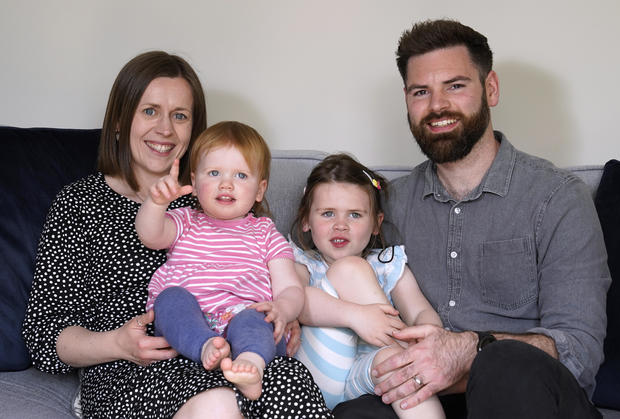
Toddler born deaf can hear after gene therapy trial breakthrough her parents call “mind-blowing”
London — One of the youngest children in the world to receive a new type of gene therapy to treat genetic deafness can now hear for the first time in her life. The family of the toddler taking part in a medical trial has called the change in their daughter “mind-blowing.”
Opal Sandy, now 18 months old, was born with total deafness due to a fault in the OTOF gene, which makes a protein called Otoferlin. Otoferlin enables communication between cells of the inner ear, or cochlea, and the brain.
As part of a trial run by Cambridge University, Opal received an infusion of a working copy of the OTOF gene in her right ear. The surgical procedure took only 16 minutes and was carried out just before she reached her first birthday.
BBC News, Opal’s mother Jo Sandy described seeing her daughter respond to sound for the first time as “absolutely mind-blowing.”
She immediately sent a message to her partner, James Sandy, who was at work.
“I’m not sure I believed it at the start,” he told the BBC. “I think I said it was just a fluke, you know? She must have reacted to something else.”
He came home immediately and removed his daughter’s cochlear implant, a device that bypasses damaged hearing cells by directly stimulating auditory nerves in the inner ear, and started testing her response to loud banging on the bottom of the stairs. She responded.
Twenty-four weeks after her surgery, Opal was able to hear whispers — leading doctors to describe the level of hearing in her right ear as “near normal.”
Opal’s doctors “played the sounds Opal was turning to, and we were quite mind-blown by how soft it was, how quiet it was,” the father said. “I think they were sounds that, in day-to-day life, you might not notice yourself.”
Andrew Matthews/PA Images/Getty
The little girl has even started speaking, the family told BBC, saying words like “Mama” and “Dada.”
Professor Manohar Bance – an ear surgeon at Cambridge University Hospitals Foundation Trust and chief investigator of the trial – told CBS News on Friday the results were “perfect” and “better” than he expected.”I see this is just the beginning of gene therapies. It marks a new era in the treatment for deafness, ” said Professor Bance.
Opal has tolerated the procedure and the gene therapy itself well, and she’s experienced no adverse effects following the treatments, according to Regeneron, the American company behind the therapy that’s being tested in the Chord trial. The study involves children across sites in the U.S., Britain and Spain.
In the first of the trial’s three parts, a low dose of gene therapy is administered to three deaf children in one ear only. That group includes Opal. A higher dose is also given to another set of three children, also in one ear. If it proves safe, more children will receive infusions, in both ears, in a next phase.
The Children’s Hospital of Philadelphia announced in January that an 11-year-old boy from Spain, who was also born unable to hear, had improvements in his hearing after becoming the first person to get the gene therapy for congenital deafness in the U.S.
Congenital deafness — defined as hearing loss present at birth — is believed to affect about 1.7 of every 1,000 children born in the U.S.
While devices such as hearing aids and cochlear implants assist people with different types of hearing loss by boosting sound, they do not restore the full spectrum of sound.
Opal’s experience and other data from the Chord trial were presented at the American Society of Gene and Cell Therapy annual conference, taking place this week in Baltimore.
Source: cbsnews.com